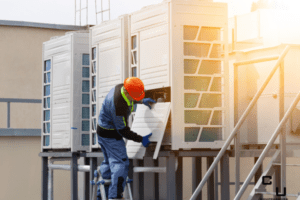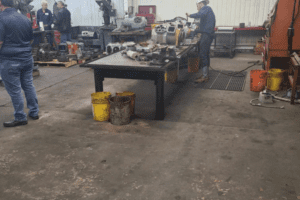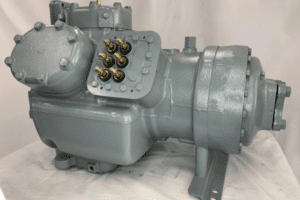School HVAC systems are important to students’ health and well-being.
Students and teachers rely on the school HVAC system to provide a comfortable learning environment. This is especially important in areas where spring and summer months bring extreme heat. Without a reliable HVAC, discomfort can be overwhelming.
In a worst-case scenario, HVAC problems can present health hazards for students.
Many HVAC professionals have already heard horror stories about poorly maintained commercial HVAC systems. A damaged compressor unit can bring down the system within a short time. A simple leak can lead to mold and mildew throughout the ventilation system.
In effect, the HVAC is one of the building systems that can bring learning to a halt.
Maintenance is Essential for Any Campus HVAC System
No matter the total enrollment of your school or the age of your students, you probably have to make tough calculations about your facilities budget. Unexpected costs in one area can directly affect teachers’ ability to make basic supplies available to their pupils.
With that in mind, proactive maintenance is essential for your HVAC system.
Maintenance enables you to keep components in service longer. A well-maintained system can adhere to high efficiency benchmarks for years longer than a comparable system that is not serviced well. This reduces the cost of ownership, often by thousands of dollars.
Your HVAC system is likely your biggest consumer of electricity or is second only to non-LED lighting. By making maintenance a top priority, you are supporting the educational mission.
Campus HVAC System Maintenance Checklist
Wondering how to maintain a campus HVAC system?
A campus HVAC system is not that much different from any HVAC in a commercial setting. It typically uses a small to mid-sized commercial compressor unit, like the Carrier 06ET299. Some large and geographically dispersed campuses may require several compressors, especially on college campuses.
In general, maintenance that might require the system to go offline is performed in the season before peak usage: The spring for cooling systems and the fall for heating systems. However, it is always best to perform intensive maintenance when students and teachers are off campus.
Here’s a campus HVAC maintenance checklist to get you started:
1. Outdoor Components
- Inspect and clean the evaporator coil and cabinet
- Clear any obstructions from drain pans and condensate lines
- Inspect the compressor unit
- Inspect and lubricate the fan blades and motor
- Inspect the control box, switches, wiring, and safety controls
- Verify and optimize the refrigerant level
2. Indoor Components
- Inspect and clean out the blower assembly
- Lubricate belts and replace any damaged belts
- Clean out the combustion blower housing
- Clear and clean the evaporator coil, drip pan, and condensate lines
- Examine and clean out the burner assembly and ignition system
- Test out your system’s safety controls
- Inspect the heat exchanger and flue system
- Examine and tighten electrical connections in control boxes and wiring
3. Air Filters
Your duct system should be thoroughly checked out every 3-4 weeks and air filters replaced every 3-6 months based on manufacturer recommendations. Keeping air filters clean can reduce your system’s power consumption by as much as 15%.
Air filter replacement also helps to ensure adequate air quality. Indoor air can be many times more polluted than outdoor air. This is especially true in older campus buildings where the duct system may be narrow compared to newer structures.
Periods of heavy use can require more frequent air filter changes. Use your own knowledge of building temperature needs and energy consumption costs to schedule more changes as needed. This can be helpful in supporting the wellness of your campus community.
4. Thermostats
Optimal thermostat settings vary based on the season of the year. While a handful of schools now have programmable thermostats, most facilities leaders must carefully calibrate their HVAC system according to the weather and annual trends.
Be sure to make changes in room usage and occupancy (as well as teacher feedback) into account when updating thermostat programming.
If usage costs are increasing but there is no obvious problem with your filters or ductwork, then the thermostat is a vital place to look.
Thermostats can become less precise over time. This often leads to the system cycling on and off more frequently than it should. The start of a cycle is very demanding in electricity. A new thermostat can raise efficiency and make scheduling easier.
5. System Checks
Monthly system checks should focus on the drip pan, drain lines, and thermostat operation. Clogs in your drainage line can cause moisture to accumulate rapidly. This puts older buildings at significant risk of mold and mildew in walls, which can shut a campus down.
Regular maintenance is the key to ongoing good performance from your HVAC system. When your compressor finally needs replacement, a remanufactured unit is an ideal option that offers fast turnaround and school budget-friendly high performance.
To find out if your school may need a remanufactured compressor to keep your system in check, contact us today for more information.












